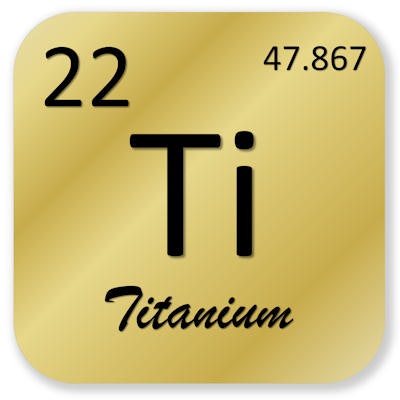
Oral surgeons and other dental practitioners faced with a challenging presentation in orthognathic and reconstructive surgery will often consider either a titanium fixation system or a biodegradable system. Researchers from the Netherlands wanted to compare the two systems and see which performed better over the long term.
They found that a commercially available titanium fixation system outperformed a biodegradable one in their long-term study. The results were published online May 11, 2017, in PLOS One.
"The performance of the Inion CPS biodegradable system was inferior compared to the KLS Martin titanium system regarding plate/screws removal in the [studied] surgical procedures," the authors concluded.
The study was led by Barzi Gareb from the department of oral and maxillofacial surgery at University Medical Center Groningen in the Netherlands.
Fixation systems
Osteosynthesis is defined as the reduction and internal fixation of a fracture with implantable devices. Titanium osteosynthesis is currently the fixation system of choice in patients with maxillofacial traumatology and in orthognathic surgery. However, in up to 40% of cases, titanium osteosynthesis material is removed in a second operation following adequate bone healing because of infections or other clinical symptoms.
“The performance of the Inion CPS biodegradable system was inferior compared to the KLS Martin titanium system regarding plate/screws removal in the [studied] surgical procedures.”
The authors wrote that biodegradable fixation systems could reduce or eliminate the removal of implants in a second operation. But do biodegradable systems perform as well over the long term? The researchers decided to compare the long-term clinical performance of a titanium and a biodegradable system in oral and maxillofacial surgery.
Four hospitals in the Netherlands participated in the randomized controlled trial, which included the following:
- Patients scheduled for a Le Fort-I fracture, and/or a solitary or multiple (maximum of two) mandibular fracture(s), and/or a zygoma fracture
- Patients scheduled for a Le Fort-I osteotomy, and/or a bilateral sagittal split osteotomy (BSSO)
- Patients treated with a BSSO and/or a Le Fort-I osteotomy, and those treated for fractures of the mandible, maxilla, or zygoma from December 2006 to July 2009
More than 200 patients were initially randomly assigned to receive either a titanium fixation system (KLS Martin, Gebrüder Martin, Tuttlingen, Germany) or a biodegradable system (Inion CPS, Inion, Tampere, Finland). However, 80 patients were lost to follow-up (49 in the titanium group), so the study finished with 85 patients in the titanium group and 56 in the biodegradable group. The researchers noted that all baseline characteristics did not differ significantly between the titanium and biodegradable groups in both total included patients and contacted patients.
The most important outcome variable was whether the plate/screws has been removed on long-term follow-up (more than five years after surgery) after treatment with the biodegradable or the titanium system, according to Gareb and colleagues. They also assessed other outcome measures such as reasons for plate/screw removal, occlusion, visual analog scale (VAS) pain scores, and if a patient would choose the procedure again.
All patients were contacted by telephone more than five years after the surgery to evaluate the outcomes (December 2006 to June 2016). Each patient's electronic medical records were also checked for plate/screw removal.
More than 16% of patients (22 of 134) in the titanium system group had their plates removed, compared with more than 26% (23 of 87) of those with the biodegradable system (p = 0.036). Occlusion, VAS pain scores, and mandibular functional impairment questionnaire responses showed good and (almost) pain-free mandibular function in both groups, however.
The researchers reported that all 23 removals in the biodegradable group were caused by clinical problems in the patient's mandible, and that these problems were only noted after an osteotomy. In the titanium group, two of the 22 removals were carried out in mandible fracture patients. Most of the removals in the titanium group were caused by clinical problems after an osteotomy in the mandible.
The main reason for plate/screw removal was abscess formation; the cause of the abscess formation was unknown, according to Gareb and colleagues.
Occlusion reported by patients
While it wasn't noted as a study limitation, the authors did report that occlusion was self-assessed by the patients in this study. They noted that a patient's assessment may differ from a practitioner's; however, their intention was to learn about the patient's opinion, so they concluded that any difference in judgment was secondary to the reported result.
They also noted that 80 patients from the original study were lost to long-term follow-up. While it's possible that these 80 patients could have had their plate/screws removed in a higher number than the patients contacted, the authors concluded it was highly unlikely.
Finally, Gareb and colleagues cited cost as another advantage of the titanium system.
"The preferable cost-effectiveness of the titanium system also argues against the usage of Inion CPS in the abovementioned surgical procedures," they concluded.



















